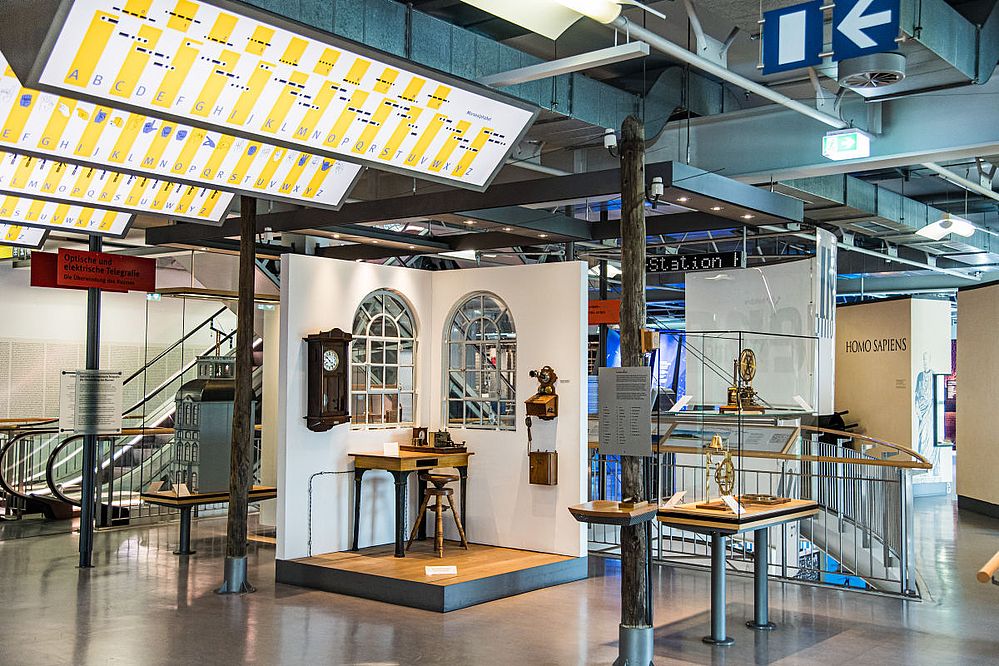Telecommunications - the transfer of information without a material carrier - goes back to such primitive forms as drums, reflected sunlight, smoke signals etc.
The visual telegraph - dependence on good visibility and low transmission speed
The visual telegraph invented by Claude Chappe (1763-1805) of France marks the beginning of modern telecommunications. The first line, from Paris to Lille, went into operation in 1794. Masts with movable indicators on a pivoted crossbar, whose positions represented letters and digits as well as predefined words, sentences and commands, were sited on towers and hilltops within the range of telescopes. The signals were relayed from station to station. Chappe's telegraph was such a success that lines were set up throughout France. Visual telegraphs of a different design were built in Sweden, England und Prussia. Almost all of them were used for military and political purposes only. The major drawbacks of visual telegraphy were its dependence on good visibility and its low transmission speed. Visual telegraph lines disappeared by the year 1854.
The first signal recording telegraph
The first suggestions for using (frictional) electricity for telegraphy was made in 1753, but operational electric telegraphs were only built after the invention of the Voltaic Pile (battery) in 1799 and the discoveries made from 1819/20 to 1831 - electromagnetism, Ohm's law, induction. Between 1833 and 1837, Carl Friedrich Gauß (1777-1855) and Wilhelm Weber (1804-1891) carried out basic experiments. In 1836, Carl August Steinheil (1801-1870) built the first signal recording telegraph in order to link Nuremberg with Fürth. However, this plan failed in the face of objections by the Royal Commisioners of both cities. As a result, Germany missed the historic opportunity to operate the world's first electric telegraph line!
The American morse telegraph - high speed and automatic relay stations
Subsequently, three types of telegraph evolved: needle telegraphs, indicator telegraphs and Morse telegraphs. The first system to get into regular operation was the five-needle-telegraph – for the Great Western Railway in England in 1839.
Initially, the needle telegraph was most succcessful in England, whereas in Germany, thanks to Siemens & Halske, the indicator telegraph prevailed. Fianally, however, the American Morse telegraph ousted the other types everywhere due to its simple construction, high speed and automatic relay stations. Electric telegraphy became available to the public from 1844 and started the era of rapid communications.
